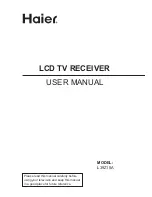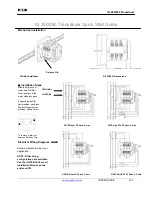
DW1000 User Manual
© Decawave Ltd 2017
Version 2.12
Page 115 of 242
Table 22
below presents additional
SFD
sequence programming options. Note: The selection of
SFD
sequences other than the IEEE 802.15.4-2011 UWB standard compliant SFD sequence may improve
performance, but will of course make it impossible to interwork with a device configured to use the standard
defined
SFD
(or with a third party devices using the standard
SFD
).
Table 22: Other possible
SFD
sequence configurations
Data
Rate
DWSFD
reg:1F:00
bit:17
TNSSFD
reg:1F:00
bit:20
RNSSFD
reg:1F:00
bit:21
SFD_LENGTH
reg:21:00
bits:0–7
Description
850 kbps
0
0
0
x
This programming selects the 8-symbol
SFD
as
defined in the IEEE 802.15.4 standard, when
operating at 850 kbps.
110 kbps
0
0
0
x
This programming selects the 64-symbol
SFD
as
defined in the IEEE 802.15.4 standard, when
operating at 110 kbps.
850 kbps
1
0
0
x
When the DW1000 is operating at 850 kbps, this
programming selects a Decawave defined non-
standard 8-symbol
SFD
, which is stronger than
the standard defined
SFD
but still a little weaker
that the data. Hence our recommendation of
the 16-symbol
SFD
defined Table 21 for best
performance at 850 kbps.
6.8 Mbps
or
850 kbps
0
1
1
8 to 16
When the DW1000 is operating at 6.8 Mbps or
850 kbps, this programming selects the use of a
user configured
SFD
with length configurable in
the range 8 to 16 symbols. In this mode the user
is responsible for correctly programming the
SFD
sequence in
Register file: 0x21 – User defined
SFD sequence
.
110 kbps
0
1
1
x
When the DW1000 is operating at 110 kbps, this
selects the use of a user configured
SFD
with
fixed length of 64 symbols. In this mode the user
is responsible for correctly programming the
SFD
sequence in
Register file: 0x21 – User defined
SFD sequence
.
Note: Configurations other than those defined in
Table 21
or
Table 22
are not recommended. To correctly
receive a frame the receiver must use the same
SFD
sequence configuration as is being used by the remote
transmitting device.
















































